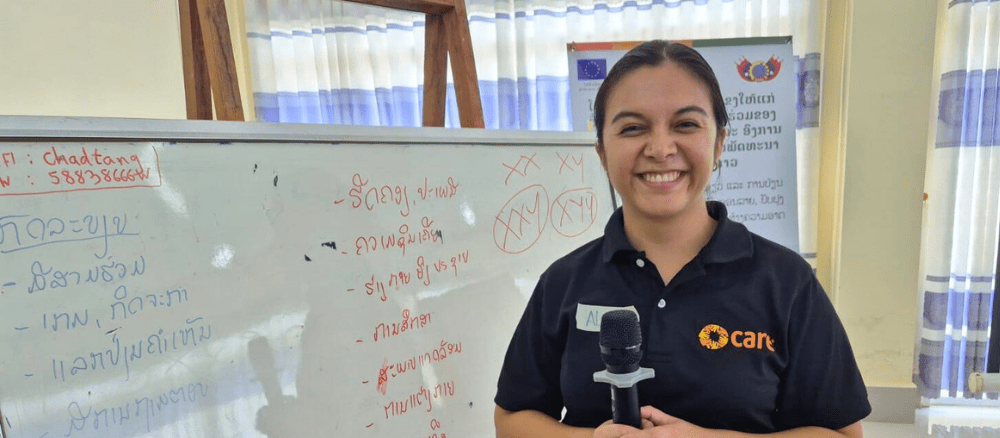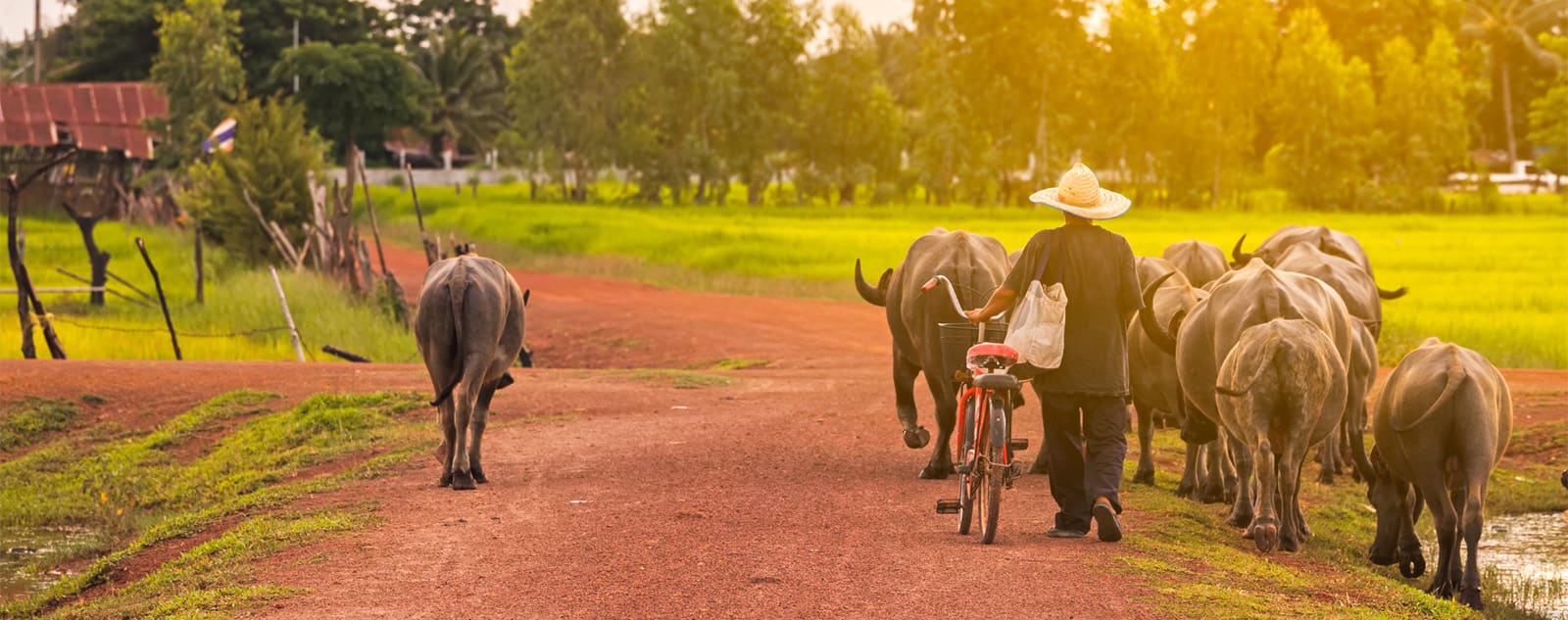#VETSVolunteerVoices #aims to brings you stories of our passionate VETS program volunteers from the field. Meet Alina Cota-Merlo, a Gender and Livelihood Advisor who spent three months in Laos (August – November 2024), supporting gender equality, sustainable agriculture, and community-led development.
A Journey of Passion and Purpose
I first discovered VWB’s VETS program in 2020 while in vet school, and as someone deeply interested in international development, I knew immediately that I wanted to be part of it. When COVID put international placements on hold, I took the opportunity to contribute through a remote VETS volunteer placement in Ghana, through which I helped develop an animal health manual for Community Animal Health Workers (CAHWs). Even from a distance, I gained valuable insights into working within different cultural contexts and addressing gender disparities in agriculture.
By the time I finished vet school, I was eager for an in-country placement with VETS—wherever that might take me. So, when the Gender and Livelihood Advisor position in Laos opened up, I applied without hesitation. While my veterinary background gave me a strong foundation in livelihoods-focused work, gender equality was a new challenge—one I was excited to take on. Specifically, I was placed with CARE, VWB’s local VETS program partner in Laos, to support their work in gender equality, livelihoods, and sustainable agriculture. My role focused on collaborating with CARE’s Women’s Economic Empowerment team, contributing to ongoing initiatives while sharing my skills and knowledge in animal health and sustainable livelihoods.
 PHOTO: Alina delivering a training session.
PHOTO: Alina delivering a training session.
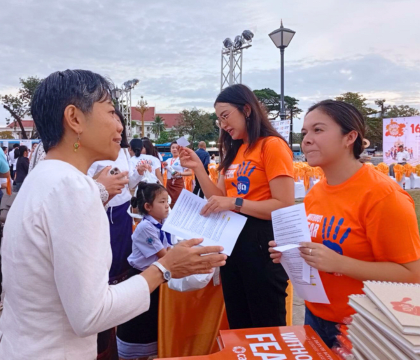 PHOTO: Alina (right) representing CARE at a public event.
PHOTO: Alina (right) representing CARE at a public event.
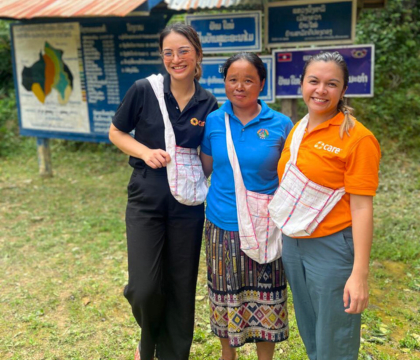 PHOTO: Alina (right) with CARE colleagues on a field visit.
PHOTO: Alina (right) with CARE colleagues on a field visit.
Strengthening Gender Equality Through Journalism and Training
During my placement with CARE Laos, I worked in the Women’s Economic Empowerment (WEE) department alongside Anousone Sengmanikham, the WEE Advisor. Together, we implemented key activities to promote gender equality and sustainable livelihoods. One of the most impactful initiatives was the gender equality training we delivered to journalists participating in CARE’s Green Journalism Project. Gender equality is not a new concept in Laos, but openly discussing it remains sensitive. Traditional gender stereotypes continue to shape many aspects of Lao culture, and our training aimed to increase awareness of these biases and their real-world impact.
We covered topics such as the difference between sex and gender, LGBTQIA2+ inclusion, privilege and intersectionality, gender biases in media, and ethical considerations when reporting on gender-based violence (GBV). The journalists were eager to participate, particularly in group activities that encouraged them to think critically about their own biases and representation in the media.
That said, discussing gender-based violence reporting proved to be a challenge. In our first training, participants struggled to apply ethical interviewing techniques for survivors, as reporting on GBV is still considered highly taboo in Laos. Recognizing this, we adapted the training for subsequent sessions, shifting the focus to social media campaigns against GBV instead. This modification allowed participants to engage more comfortably and even contribute ideas for CARE’s official campaign posts.
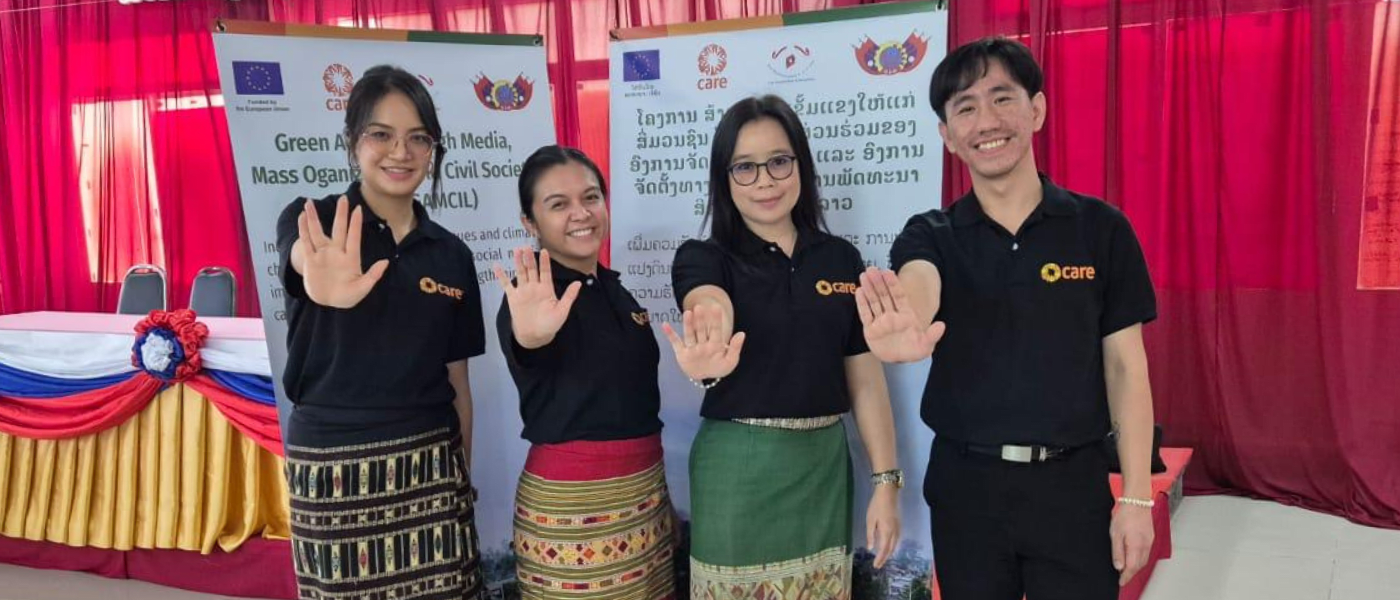 PHOTO: Alina (2nd from left) with WEE colleagues at a gender equality training for journalists in CARE’s Green Journalism Project.
PHOTO: Alina (2nd from left) with WEE colleagues at a gender equality training for journalists in CARE’s Green Journalism Project.
Advancing Women’s Empowerment Through Project Monitoring
A key aspect of my placement was ensuring that CARE’s projects in Laos actively integrated gender equality. One way we did this was through "gender markers"—standardized tools used by CARE International to assess whether projects are designed and implemented through a gender lens. Each project is rated on a scale from 0 (gender unaware) to 4 (gender transformative), with a requirement that all projects score at least a 2 (gender neutral).
By evaluating projects at different stages, we ensured gender considerations stayed at the forefront. This process also allowed for real-time adjustments to better integrate gender equality. But updating gender markers wasn’t just about assessment—it was about strengthening the impact of programs and ensuring that women and marginalized groups weren’t left behind.
Creating Impact Through the 16 Days of Activism Campaign
One of the most significant visibility campaigns I worked on was the 16 Days of Activism Against Gender-Based Violence campaign. My role involved a mix of strategic planning, awareness-building, and hands-on engagement. I worked closely with CARE’s communications team to design a social media campaign that highlighted the importance of preventing GBV, ensuring that key messages reached diverse audiences.
In addition to digital advocacy, I helped develop and distribute awareness materials to CARE’s regional offices, extending the campaign’s reach to some of the most remote areas of Laos, where GBV awareness is often lacking. Seeing the materials in use—posters displayed in community centers, stickers worn proudly by participants—was a reminder of the power of grassroots advocacy.
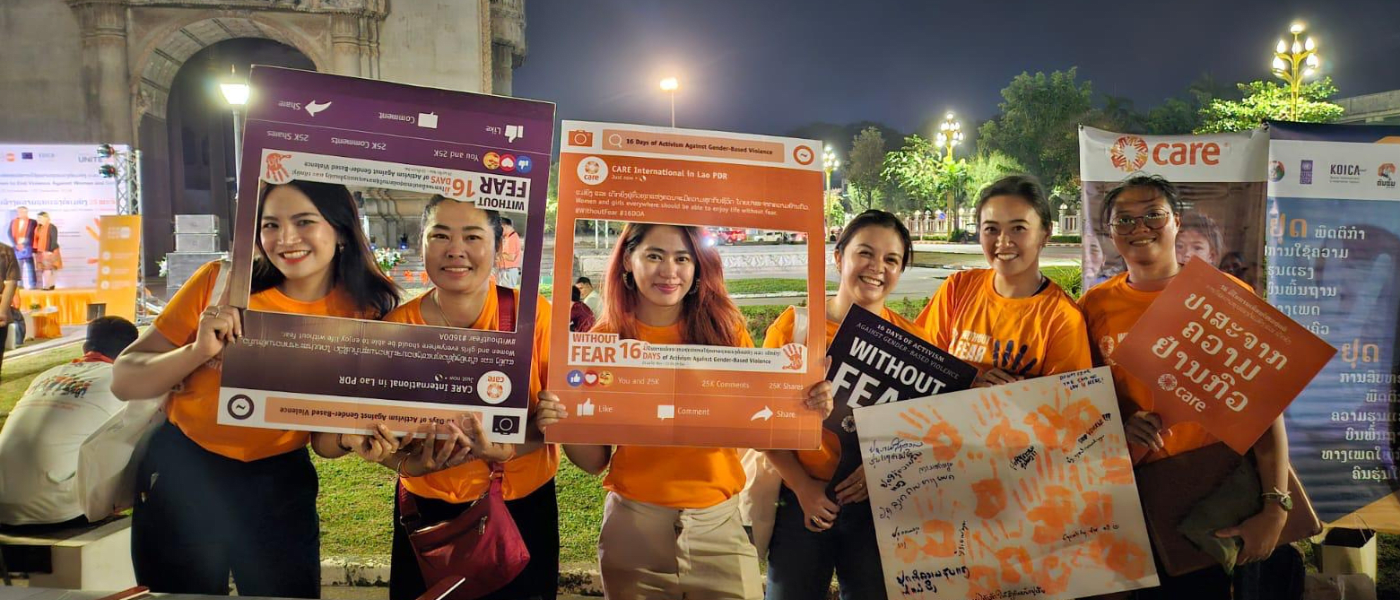 PHOTO: Alina (3rd from right) posing with interactive campaign materials and CARE colleagues at the 16 Days of Activism Against GBV opening ceremonies.
PHOTO: Alina (3rd from right) posing with interactive campaign materials and CARE colleagues at the 16 Days of Activism Against GBV opening ceremonies.
On the ground, I also helped implement interactive activities at CARE’s booth during the campaign’s opening ceremonies. One moment that stuck with me was seeing a woman in a remote village proudly wearing one of the campaign stickers. She told us that it was the first time anyone had spoken about GBV in her community—and that awareness alone made her feel stronger. Moments like these reinforced why advocacy work matters.
Strengthening Animal Health and Livelihoods
While my work in gender equality was a major focus, I also had the chance to apply my veterinary background—supporting village veterinarians (VVWs) and livestock farmers in improving biosecurity and animal health. Disease outbreaks are a major challenge in rural Laos, often exacerbated by natural disasters like flooding. Many VVWs and farmers had heard of major livestock diseases but had little experience handling outbreaks until they occurred—at which point they were often unprepared.
To address this, I led training sessions focused on preventing, eliminating, and controlling disease spread. I emphasized practical strategies such as quarantining sick animals, vaccination programs, and proper carcass disposal. Farmers and VVWs also participated in group exercises where they developed biosecurity plans tailored to the specific diseases affecting their communities. Seeing their confidence grow in applying these concepts was incredibly rewarding.
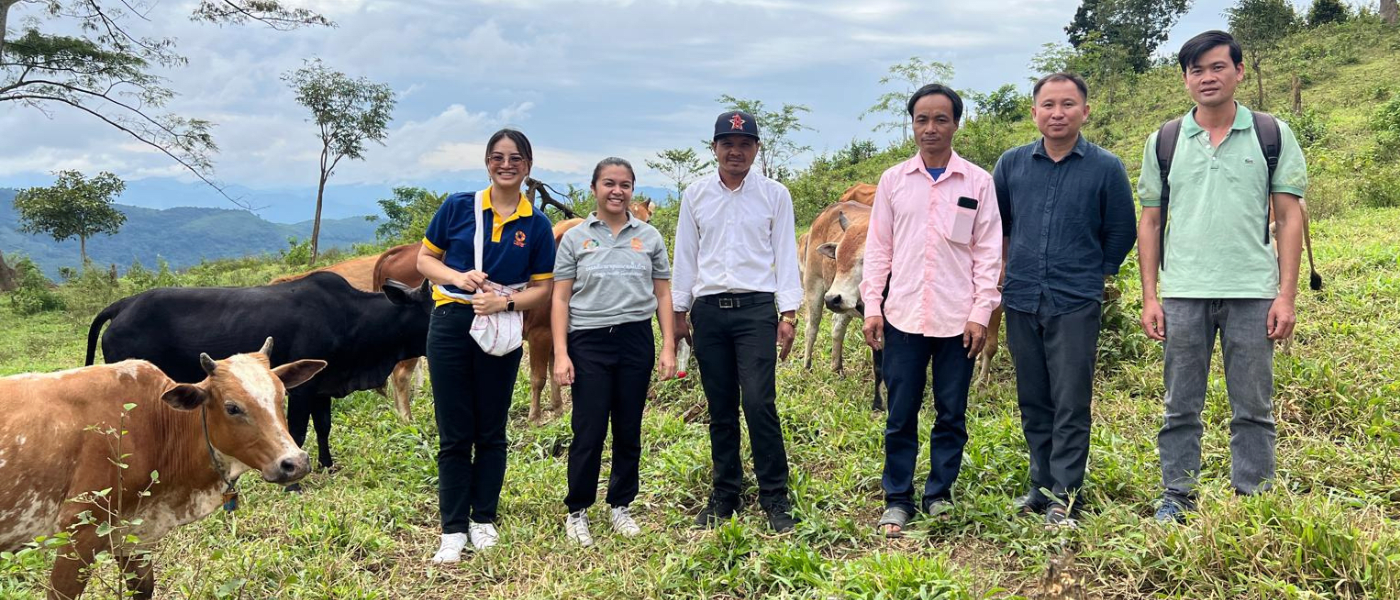 PHOTO: Alina (second from left) and Anousone Sengmanikham, WEE Advisor (left) at a field visit in Phongsaly Province to meet with farmers and learn their unique challenges.
PHOTO: Alina (second from left) and Anousone Sengmanikham, WEE Advisor (left) at a field visit in Phongsaly Province to meet with farmers and learn their unique challenges.
I also contributed to the creation of a veterinary manual to guide CARE’s livestock programs. Field visits allowed me to assess existing best practices and tailor the manual to the challenges VVWs and farmers faced. The next step will be translating the manual into Lao to increase accessibility.
Sharing Meals and Building Community
Beyond the training sessions and technical work, some of my most meaningful moments came from the connections I formed in the communities I worked with. For example, I'll never forget sharing meals with community members and my colleagues in the regional offices. Even when I couldn’t always understand the conversations (my Lao is still very basic), the warmth and hospitality of the people I worked with spoke volumes. In Lao culture, meals are about more than just food—they’re a way to build relationships, show respect, and strengthen community ties.
A particularly special meal was in Mai Village after interviewing the local water committee for an impact story. I hadn’t expected the villagers to prepare a communal meal, but they generously invited us to sit down and share lunch together. The women made grilled chicken and a bamboo soup that was incredibly flavorful. As I ate, I remember thinking, I may never have this exact dish again, but I’ll always remember the generosity and sense of belonging I felt in that moment. It was a powerful reminder that beyond the technical work—whether it was training, advocacy, or research—so much of the impact of my placement came from these personal connections.
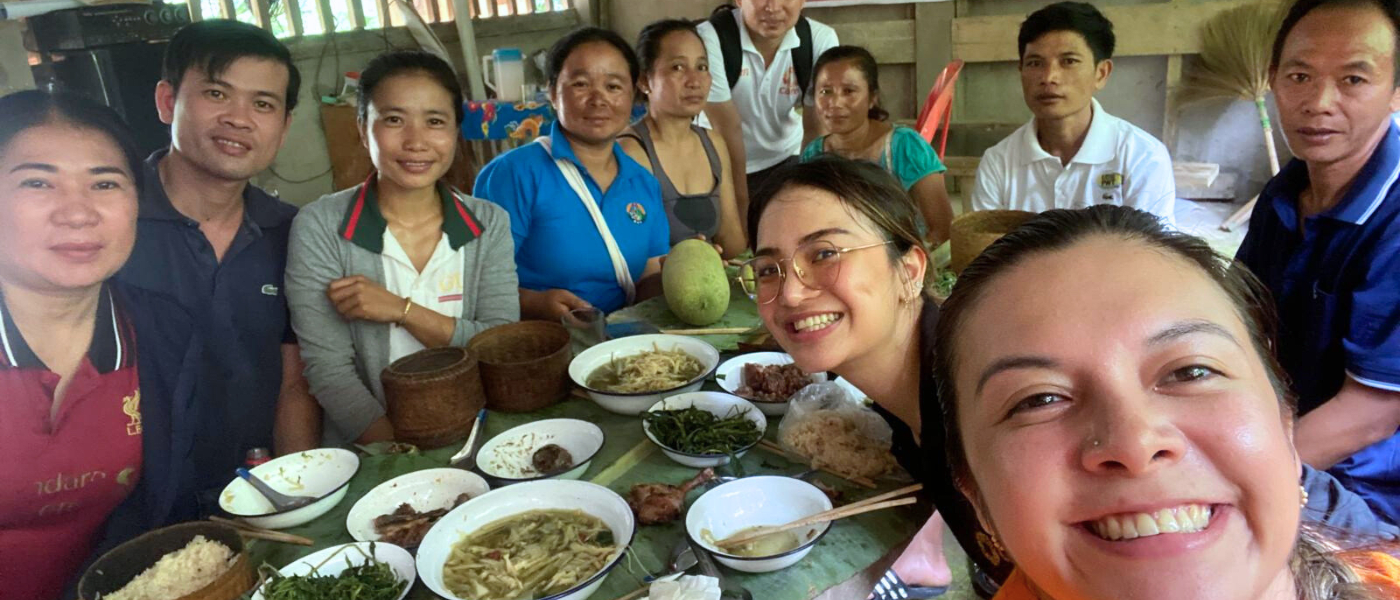 PHOTO: Alina (foreground) poses with colleagues and community members in Mai Village at the specially prepared meal to honor her visit.
PHOTO: Alina (foreground) poses with colleagues and community members in Mai Village at the specially prepared meal to honor her visit.
Continuing the Journey in One Health
For future VETS volunteers considering a placement in gender and livelihoods, my advice is simple: stay adaptable. Plans often change, and flexibility is key to making a meaningful impact. It’s also important to listen—local colleagues and community members know their needs best, and working alongside them ensures that efforts are sustainable and relevant. Most of all, embrace the experience fully, from the technical work to the personal connections. These moments shape not only the communities we work with but also our own perspectives and future paths.
Overall, my time in Laos has been transformative, showing me firsthand the power of collaboration, advocacy, and capacity building. I can’t wait to return to CARE Laos in April for my next placement as a One Health Advisor—there’s still so much to contribute, and I know this is just the beginning of my journey in global health.
VETS is an 8-year initiative (2020-2028) to improve the economic and social well-being of marginalized people, particularly women and girls, in 6 countries across Africa and Asia. In collaboration with local partners, the program is implemented through 190 Canadian volunteers on international assignment and is generously funded by Global Affairs Canada. Learn more.

